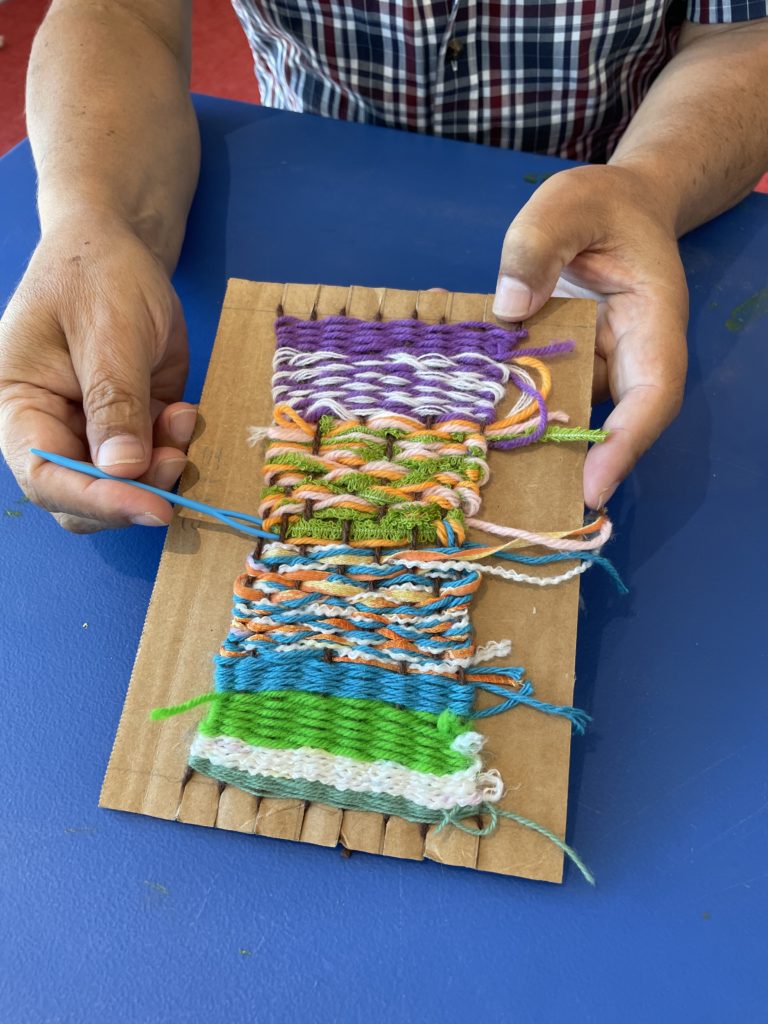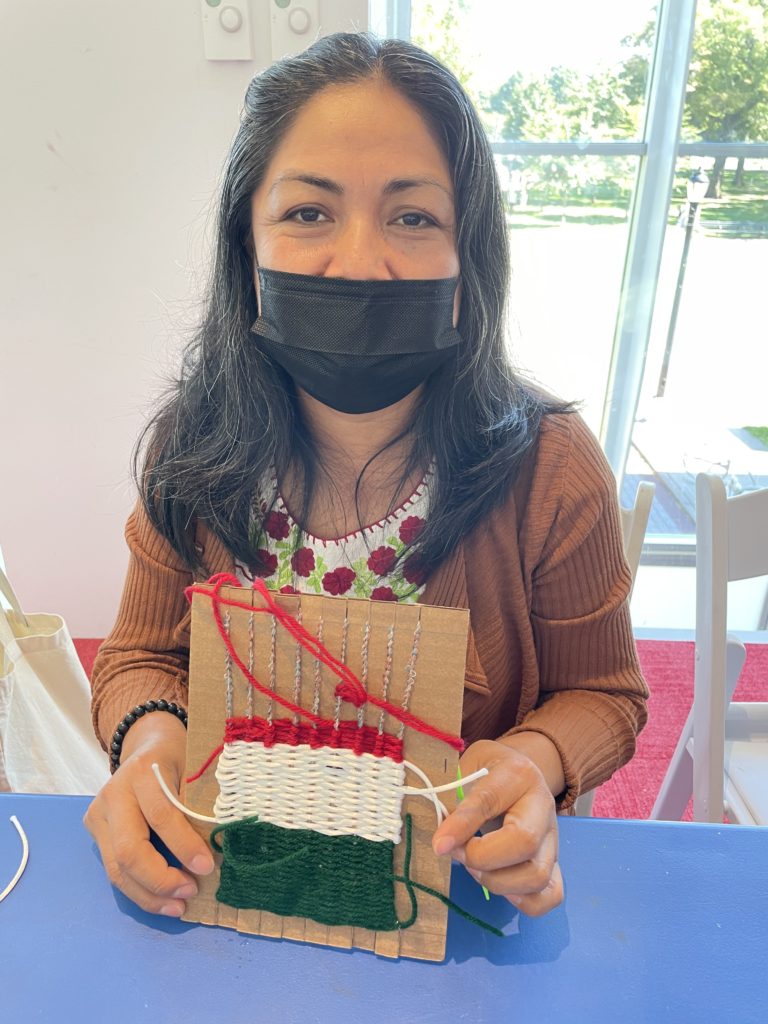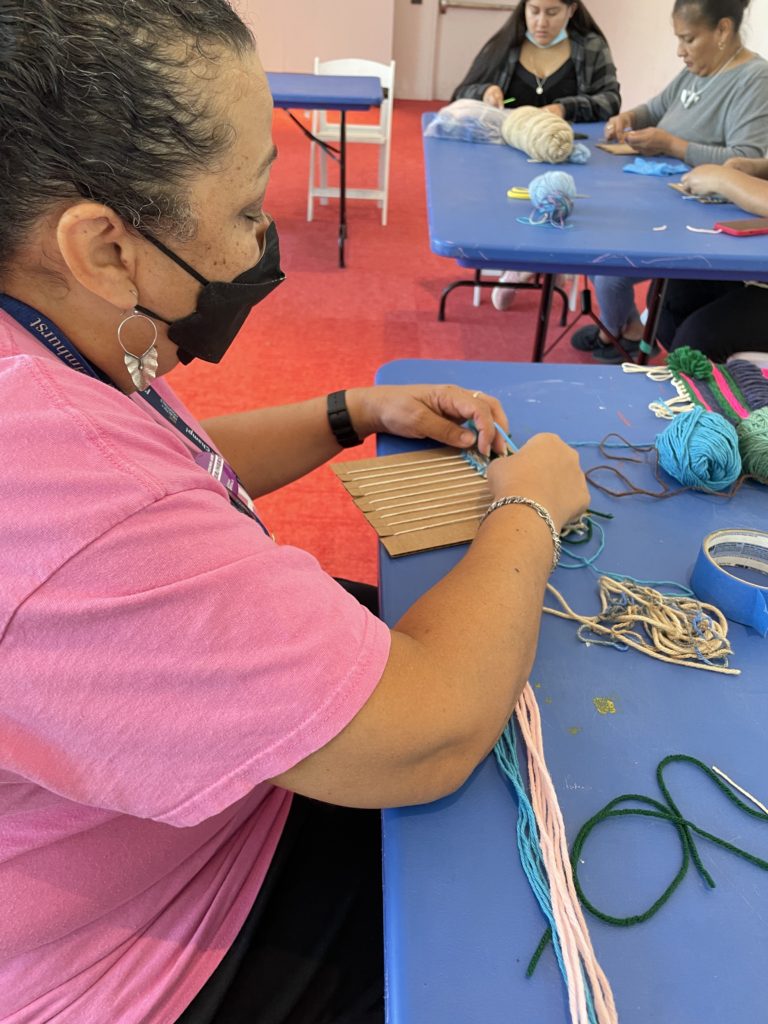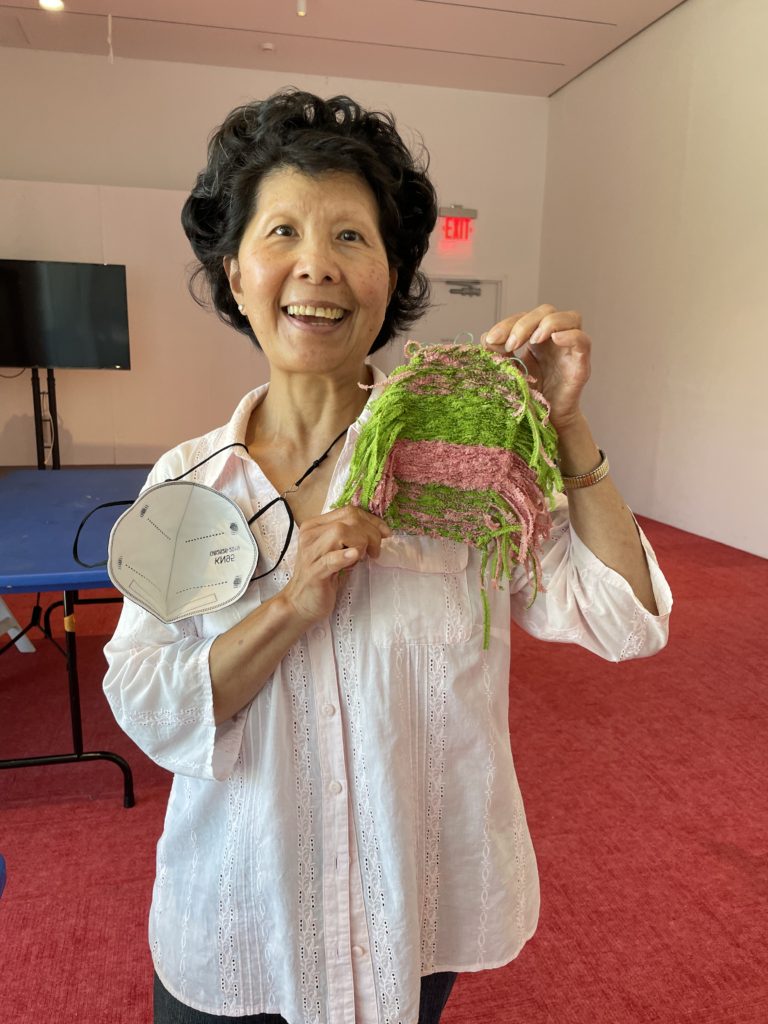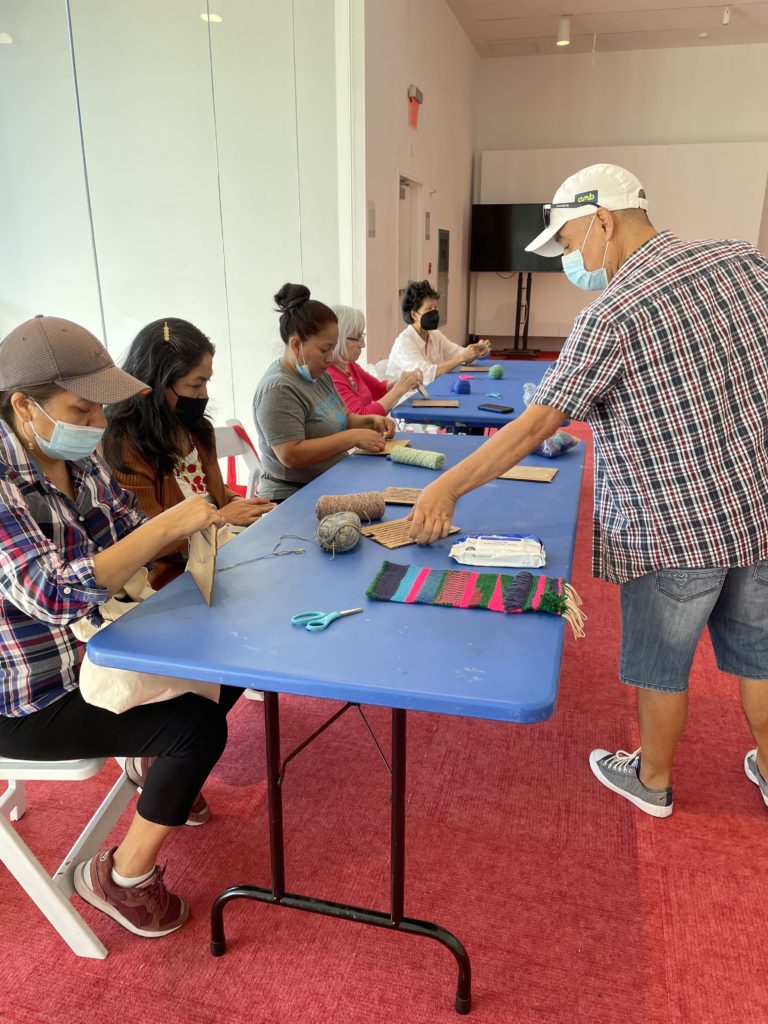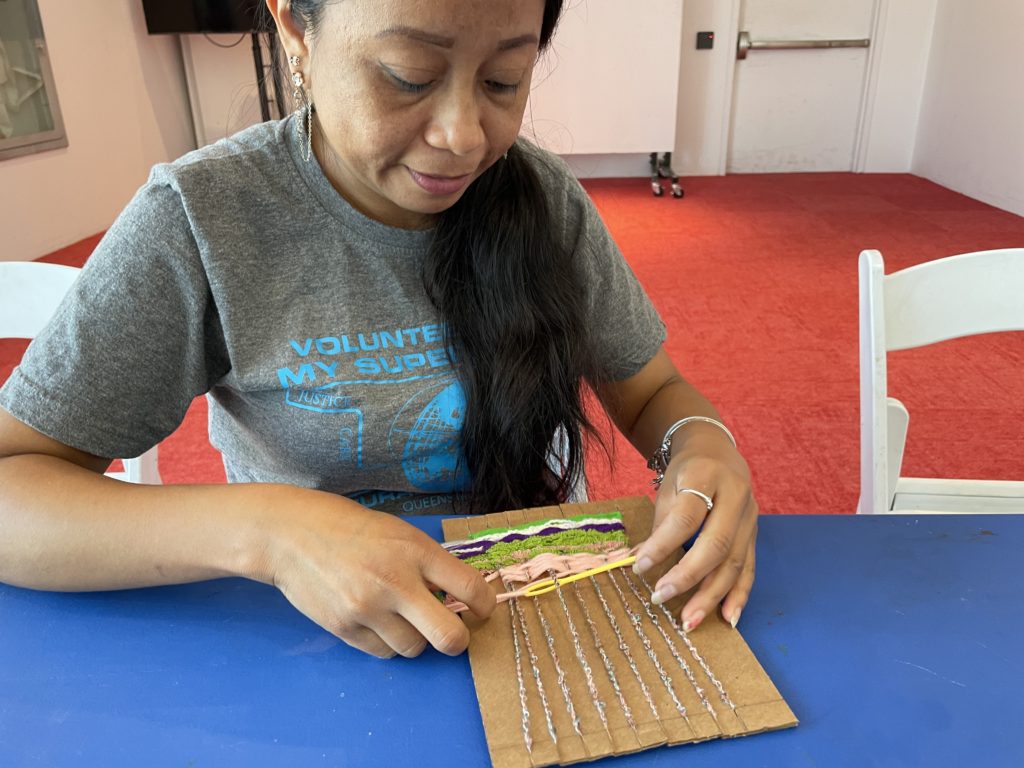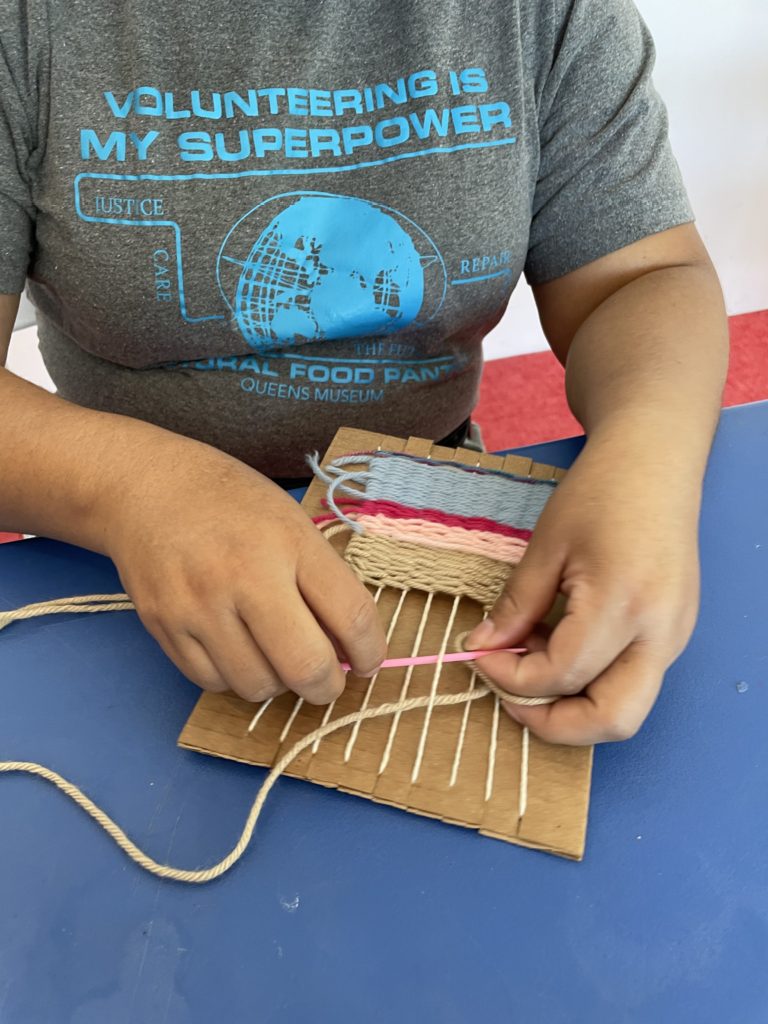En las dos primeras sesiones del Taller de Artesanía, los participantes aprendieron y experimentaron con el tejido de tapices. Esta es la forma más antigua de tejido, y también es una técnica interesante y fácil de aprender.
En la primera sesión aprendimos una de las técnicas de tejido más básicas: Las rayas horizontales. Se crean tejiendo una sección de hilo del mismo color junto a una sección de hilo de otro color, y así sucesivamente. Utilizamos un marco de cartón rectangular como telar. Los participantes prepararon el marco midiendo y añadiendo muescas (cada ½”) en la parte superior e inferior. Numeramos cada muesca en la parte superior e inferior, de modo que pudiéramos hacer coincidir el número al enrollar para mantener las líneas rectas. A continuación, empezaron a enrollar la envoltura, que estaba sujeta al bastidor y corría verticalmente. En un telar de madera, la envoltura tiene que estar muy tensa, porque va a sujetar la trama. Como utilizamos un marco de cartón, tuvimos que prestar mucha atención a la tensión para no doblar el marco. El color de la envoltura no era importante porque se iba a cubrir con la trama tejida, como se hace tradicionalmente. La trama se teje a través de la envoltura para crear la tela y el patrón. Algunas personas experimentaron con hilos finos, gruesos y/o con textura; así como con diferentes colores. Este primer trozo de tejido (el resultado de la trama tejida se llama tela o paño) estaba destinado a dejarse en el bastidor. Un par de personas decoraron el bastidor con hilos posteriormente.
En la segunda sesión, seguimos tejiendo rayas horizontales, ya que había muchos nuevos participantes interesados en aprender esa técnica. Pero esta vez utilizamos un trozo de cartón rectangular (no un marco) como telar. El cartón ya tenía las muescas (cada ½”) en la parte superior e inferior. Esta vez no las numeramos. Como algunas personas avanzaron con secciones de rayas horizontales, aprendimos los Nudos Soumak. Esta “puntada” crea una línea elevada a través de la envoltura. La trama se envuelve alrededor de cada hilo vertical. Los nudos Soumak dan textura a la pieza en contraste con las rayas horizontales de tejido plano. En esta ocasión, nuestra artista educadora trajo una muestra para mostrar diferentes técnicas de tejido. Al final del taller, algunos aprendieron rápidamente a hacer borlas anudadas, para añadir otro tipo de textura a sus piezas.
Texto por Michelle Melo
______________________________________________________
In the first 2 sessions of the Arts and Crafts Workshop, the participants learned and experimented with Tapestry Weaving. This is the oldest form of woven textile, and it is also an exciting technique easy to learn.
In the first session, we learned one of the most basic weaving techniques: Horizontal Stripes. They are created by weaving a section of the same color yarn next to a section of another color yarn, and so on. We used a rectangular cardboard frame as Loom. The participants prepared the frame by measuring and adding notches (every ½ “) at the top and the bottom. We numbered each notch at the top and bottom, so we could match the number when winding to keep the lines straight. Then they started winding the wrap attached to the frame and running vertically. In a wood loom, the wrap has to be kept very tight because it will hold the weft. Since we used a cardboard frame, we had to pay close attention to the tension to not bend the frame. The wrap color was unnecessary because it was going to be covered with the woven weft, as it is traditionally done. The weft is woven across the wrap to create the cloth and pattern. Some people experimented with thin, thick, and/or textured yarns, as well as different colors. This first piece of fabric (the result of a woven weft is called fabric or cloth) was intended to be left on the frame. A couple of people decorated the frame with yarn later on.
In the second session, we continued weaving Horizontal Stripes, as many new participants were interested in learning that technique. But this time, we used a rectangular piece of cardboard (not a frame) as Loom. The board already had the notches (every ½”) at the top and bottom. This time, we did not number them. As some people moved forward with sections of horizontal stripes, we learned Soumak Knots. This “stitch” creates a raised line across the wrap. The weft is wrapped around each vertical thread. Soumak knots give texture to the piece in contrast to the flat woven horizontal stripes. Our Artist Educator brought a sample to show many different weaving techniques this time. A the end of the workshop, some people quickly learned how to make Knotted Tassels, to add another type of texture to their pieces.
Text by Miche Melo

